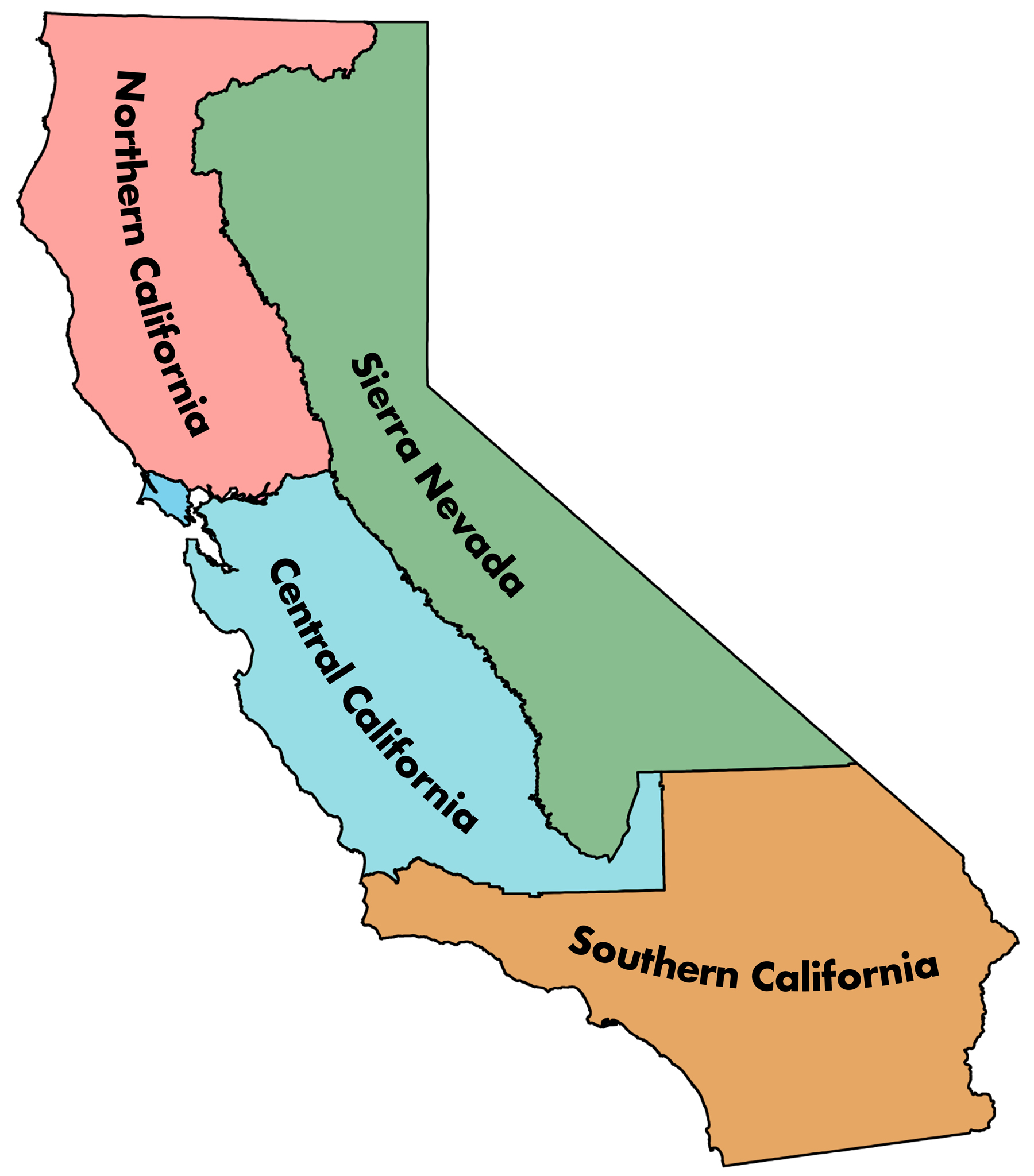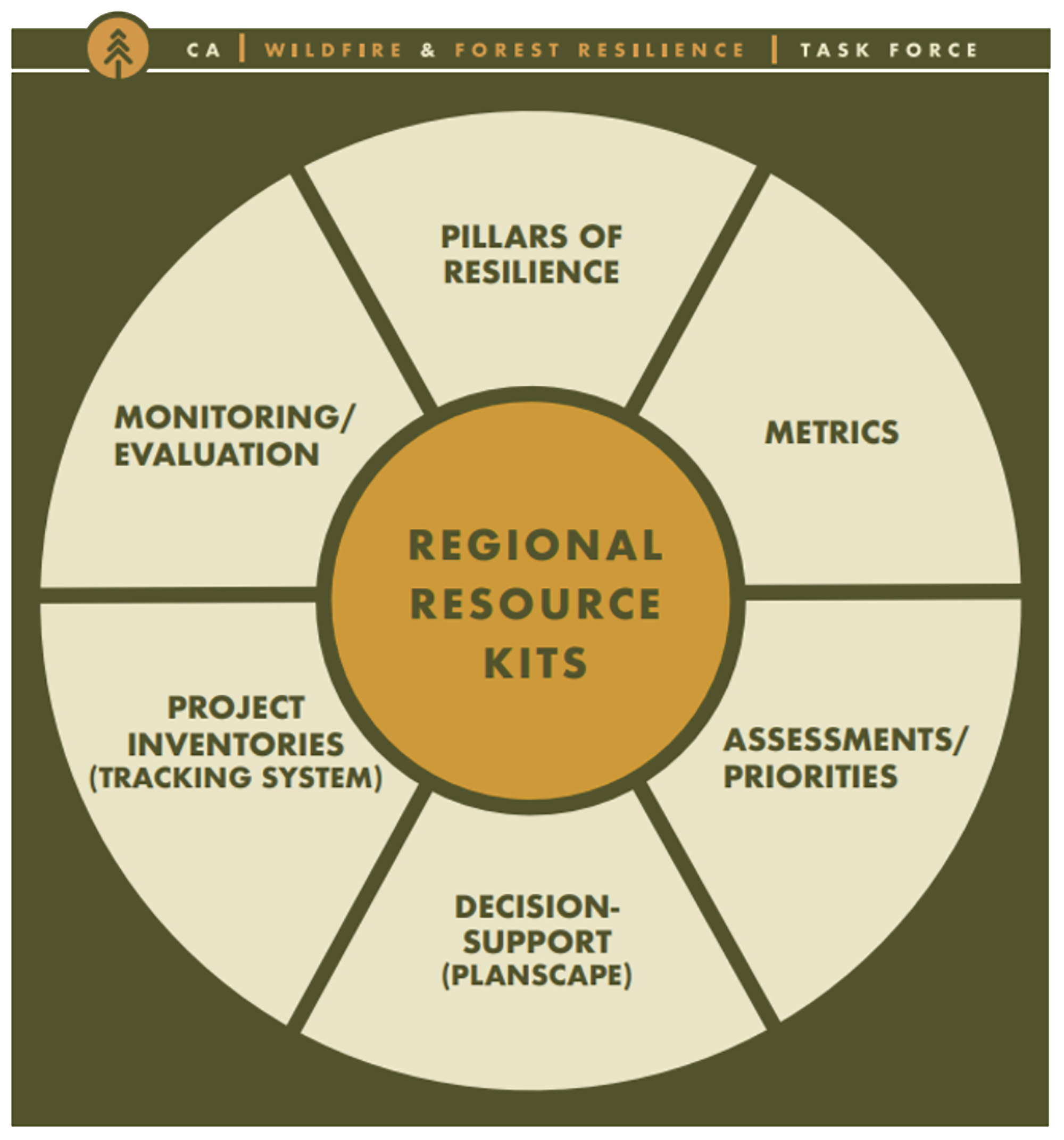Regional Resource Kits & Regional Profiles
The Task Force recognizes that central to achieving the goals of the Action Plan is the need to mobilize regional approaches to landscape health and resilience. Regional Frameworks provide a structure for assessing landscape conditions; setting objectives; planning, funding and implementing projects; and measuring progress towards social-ecological resilience.
What Are Regional Resource Kits?
Regional Resource Kits are sets of tools and data created to accelerate the work by regional partners and collaboratives to reduce wildfire hazard and improve the conditions of forested and shrub landscapes. The Resource Kits will be revised based on user feedback and updated as new science and technologies are developed.
What Are Regional Profiles?
The Regional Profile series is a publicly available resource developed by the Task Force’s Science Advisory Panel. The profiles summarize the socio-ecological context of each region, highlight examples of current condition assessments from the associated Regional Resource Kit, and present findings from interviews and surveys about stakeholder priorities and concerns for community and ecosystem resilience.

Sierra Nevada Region
Southern California Region
Central California Region
Northern California Region
More About Regional Resource Kits
What do Regional Resource Kits provide?
An interagency team of scientists have developed Regional Resource Kits to help regional partners plan, prioritize, and monitor projects. Each kit provides:

> Pillars of Resilience – the set of 10 pillars describe desired landscape outcomes that encompass the suite of social and ecological benefits provided by resilient systems across fire-prone landscapes. Each RRK contains statewide and regional data and metrics that combine into the Pillars framework.
Metrics – a core database of management-relevant metrics that have been vetted by federal, state, and academic scientists. Each Resource Kit contains unique metrics tiered to the Pillars of Resilience and driven by regionally specific needs and risks.
Assessments/Priorities – a suite of data and mapping tools that offer spatially explicit assessments of current conditions for key resources.
Decision-Support – a set of tools to help land managers evaluate large amounts of data to consider potential management options. Planscape is a tool developed by the Task Force and its partners for such a use.
Project Inventories/Tracking System – a set of regionally specific data and tools derived from the statewide Interagency Treatment Tracking System.
Monitoring/Evaluation – a set of regionally specific data and tools derived from the state Monitoring and Evaluation System.
How Do Regional Resource Kits support the Roadmap to Resilience?
The Roadmap to Resilience outlines how to build capacity and momentum to accomplish the commitment by the USDA-Forest Service (USFS) and the State of California to collectively treat a minimum of 1 million acres annually by 2025.
The Regional Resource Kits help support the Roadmap by increasing regional capacity and aligning federal and state data and tools, giving partners the data needed to make informed treatment decisions.
Who creates the Regional Resource Kits?
Development of the Resource Kits builds on an interagency collaboration that includes:
- USFS Pacific Southwest Research Station (PSW), USFS Region 5 Remote Sensing Lab (RSL), and the Fire and Resource Assessment Program (CAL FIRE – FRAP)
- Applied research projects funded by the USFS and the California Strategic Growth Council
Specific members include:
- ACCEL: A joint effort by the RSL and PSW to increase the pace and scale of treatments by building the essential spatial data and analytical tools to inform management investments. Lead: Patricia Manley
- CAL FIRE-FRAP Forest and Range Assessment: A comprehensive report on the status of California’s forest and rangelands. Lead: Tadashi Moody.
- CECS: The Center for Ecosystem Climate Solutions. A University of California-led effort to develop consistent, updateable, state-wide data layers that inform climate adaptation and mitigation. Lead: Michael Goulden.
More About Regional Profiles
The Regional Profiles were developed by the Science Advisory Panel of the California Wildfire and Forest Resilience Task Force to summarize the social context and ecological conditions of community and ecosystem wildfire resilience in each of the state’s four diverse regions.
Each profile is informed by the best available scientific information, as well as the experience and perspectives of diverse stakeholders from the region. Stakeholder input was gathered via an anonymous survey about priority areas of investment for achieving resilience, as well as more focused interviews with regional experts and leaders about key issues, barriers, and opportunities for increasing resilience to wildfire.
The Regional Profiles are a complement to the Regional Resource Kits, which were also developed for the Task Force via an interagency collaboration. The Regional Profiles and Resource Kits leverage the Pillars of Resilience Framework, which was first developed for the Tahoe-Central Sierra Initiative through a collaborative process with local stakeholders. The Framework is structured around ten desired outcomes, termed ‘Pillars of Resilience’, that reflect key social and ecological values, and each pillar is characterized by regionally-specific metrics intended to help assess current conditions.
Regional Framework Working Group
Applying a regional approach to managing our state’s many forestry and wildland ecosystems and communities by empowering local communities and municipal agencies to set priorities for resilience projects.
